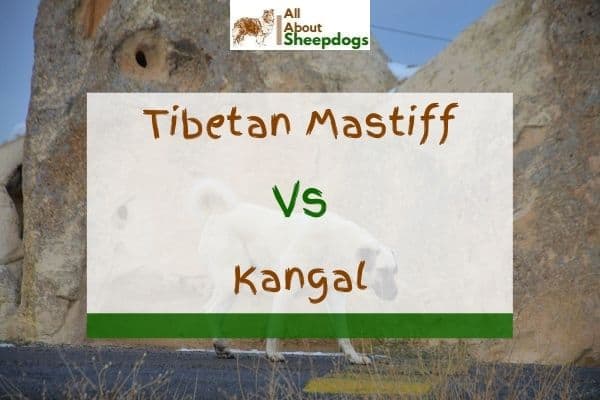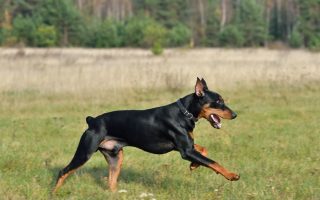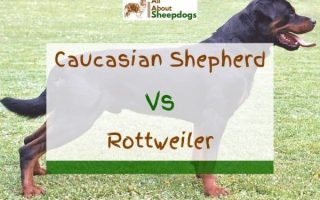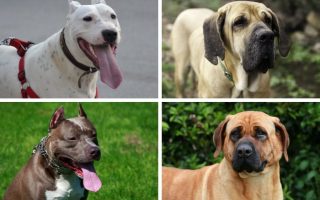Big and strong dogs, who can work hard and protect their family, have always been and always will be particularly valued among dog owners.
There are plenty of breeds that excel as guardians and even some smaller ones can be alert and loud enough to provide some sort of protection.
However, these giant breeds have the advantage of their imposing and often scary presence which can usually be more than enough to deter the impostors and protect their owners.
If this is the type of dog you’re looking for, Tibetan Mastiff and Kangal should be at the very top of your list.
Even though these breeds come from two different parts of the world, they still have a lot in common.
They’re both very strong, strong-willed, and extremely protective.
However, I’ll compare Tibetan Mastiff vs Kangal to see what separates them and what are the unique traits of each breed.
So, let’s dive in!
| Attributes | Tibetan Mastiff | Kangal |
| Good For First Time Owners | No | No |
| Good Guard Dog | Yes | Yes |
| Apartment Friendly | With Enough Exercise | No |
| Good Family Dog | Possible With Lots Of Training | With Training |
| Shedding | Low To Moderate | Moderate To High |
| Barking And Howling | Moderate To High | Moderate To High |
| Height | 24-30 inches (61-76 cm) | 28-32 inches (71.5-81 cm) |
| Average Life Expectancy | 10-12 Years | 12-15 Years |
[wpsm_toplist]
Tibetan Mastiff – Dog Breed Information
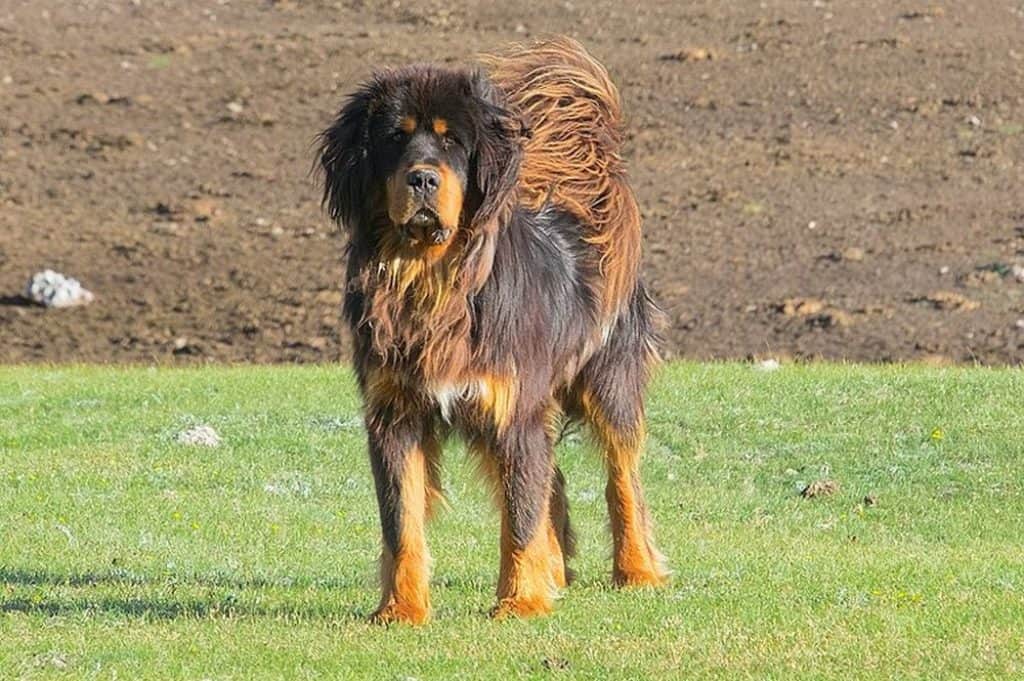
A very old breed, Tibetan Mastiffs have a long history and are likely the common predecessor of all modern Mastiff breeds.
They were first developed in the rough terrain of the Tibet and Himalayas mountains.
Originally, they served to protect the locals and their livestock and property. They were also often employed and guardians of Tibetan monasteries.
Even nowadays, Tibetan mastiffs are valued as fearless protectors, but are also popular as family and show dogs.
Appearance
The first thing that catches the eye when you see a Tibetan Mastiff is their big, muscular, and well-structured body.
The distinctive lion-like mane makes their appearance only more majestic. When on the move, they’re surprisingly elegant and agile.
The body of a Tibetan Mastiff is covered with a thick, all-weather double coat.
The undercoat is rather soft and woolly, while the topcoat is more harsh, dense, straight, and fairly long.
Purebred Tibetan Mastiffs never have wavy or curly hair.
The primary color is either black, red, brown, or blue and the coat may feature occasional tan or white markings.
The head is massive and broad. Eyes are deep-set and are brown-colored. The feathery tail arches across the dog’s back.
Adult males reach 26-30 inches (66-76 cm) in height and 90-150 pounds (41-68 kg) in weight.
Females grow around 24-30 inches (61-76 cm) and weigh 70-120 pounds (32-54 kg).
Temperament
Tibetan Mastiffs are hard-working, smart, and very loyal dogs. They grow very attached to their owners and family and are extremely protective.
With their history of fending dangerous wild animals to protect their flocks, they’ve developed strong guardian instincts and are even willing to put their lives on the line to protect their owners.
Their distrust towards strangers and imposing physical presence only add to their credentials as guardians.
However, they also have a softer side. They are rather playful and great with kids.
Still, they are also rather independent and don’t crave attention in a way some other breeds do.
Besides being independent, they can also sometimes be rather stubborn which can cause problems for less experienced owners.
Tibetan Mastiffs often prefer to be left alone to do the job they were tasked with, without too much input from their humans.
Kangal – Dog Breed Information
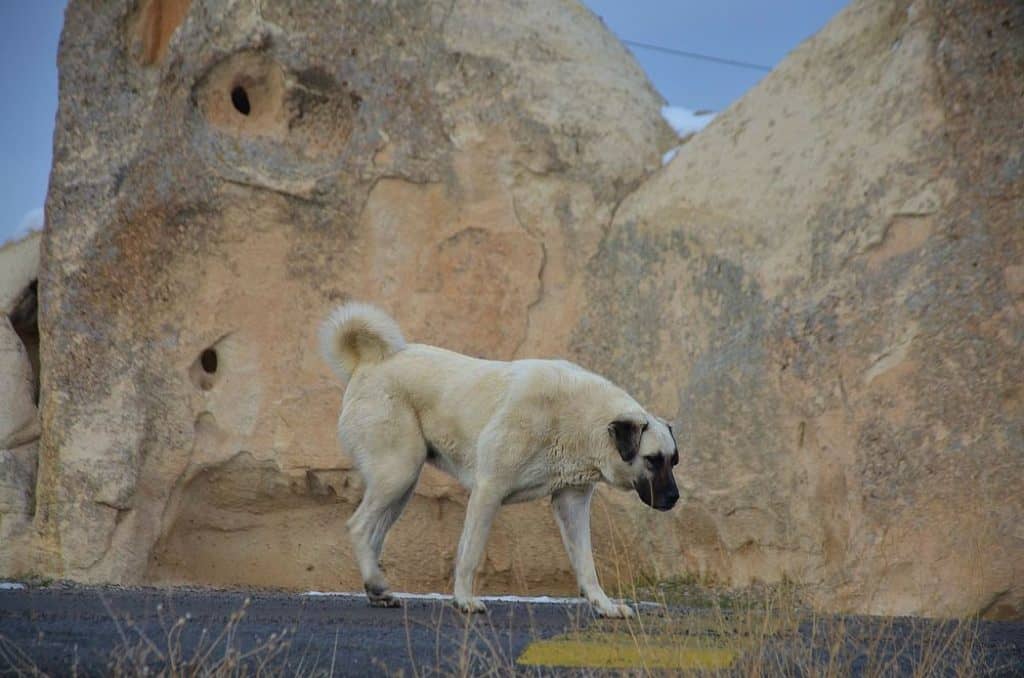
Kangal dogs hail from the Sivas region of Turkey where they served as livestock guardians.
They got their name after the town of Kangal. This breed protected the flocks from wild predators of all sizes., including bears and wolves.
More recently, they were exported to African countries where they successfully protected the livestock against dangerous animals such as lions or cheetahs.
Appearance
Kangals are huge and heavily-boned dogs with a rather menacing appearance.
Their build is rather similar to mastiff breeds, but they’re not as bulky and are more lean and agile.
They have a fairly short, dense double coat.
The coarse topcoat is water-resistant and protects them from bad weather and snow, while the softer undercoat provides insulation both in freezing and scorching temperatures.
Most dogs feature fawn or tan-colored coats with black masks and black ear shadings. Occasionally, they may have white markings on the chest, toes, or chin.
Their imposing physique is accentuated by their massive rounded heads with dark muzzles.
The ears are dropped while the eyes are brown and droopy. The curled tail is carried up and over the back.
Males are 30-32 inches (77-86 cm) high and weigh 110-145 pounds (50-66 kg).
Females grow to 28-30 inches (72-77 cm) and weigh 90-120 pounds (41-54 kg).
Temperament
Even though they may seem scary, Kangals are actually calm and balanced dogs with a reliable temperament.
Despite being fearless when protecting their flock or family, they’re never aggressive towards humans or livestock.
They are very caring and gentle around kids or smaller animals in the household.
Kangals are very intelligent and highly trainable, especially at a young age.
Their natural alertness and confidence make them great watchdogs, especially since they’re rather aloof towards strangers.
Kangal has the mentality of a pack leader and sees the family as their pack that needs to be protected.
Like most historic herding breeds, throughout history, they got used to roaming alone and have strong independence tendencies.
They won’t require much attention, but still require a lot of exercise.
Kangals are happiest when they have a job to perform and can get easily bored if left idle.
Tibetan Mastiff vs Kangal – What’s the Difference?
| Tibetan Mastiff | Kangal |
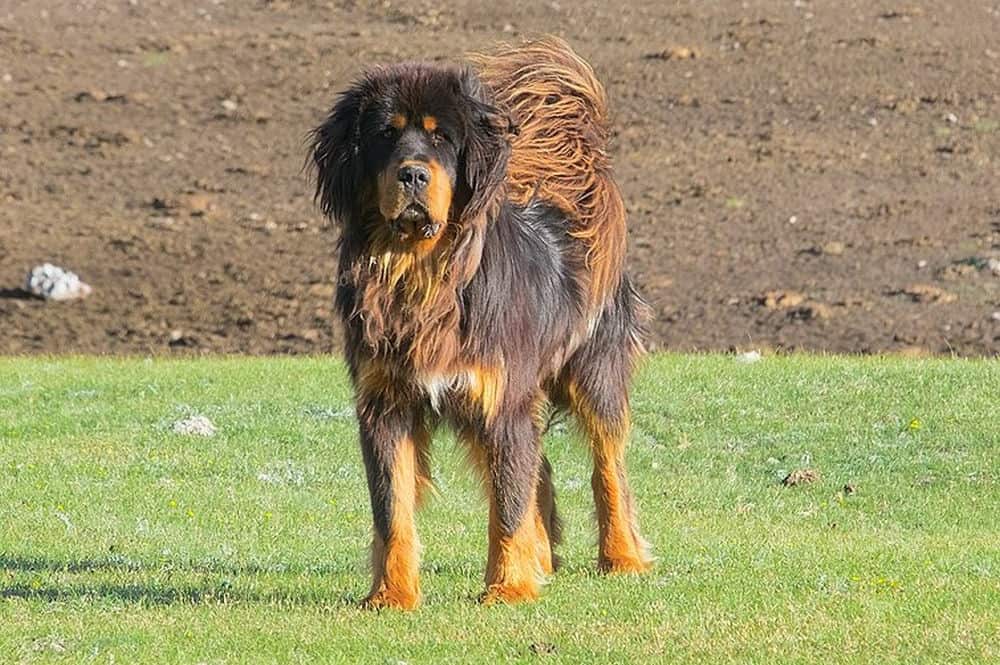 | 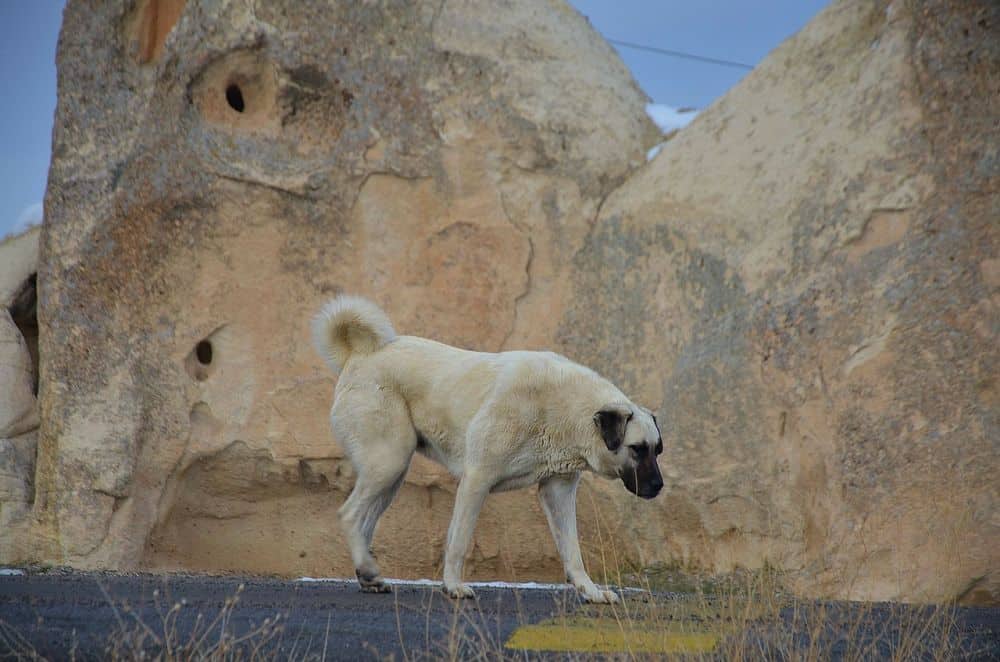 |
| Tibetan Mastiff by Alexandr frolov (CC BY-SA 4.0) |
The distinction between the two breeds starts with their appearance.
Tibetan Mastiffs are slightly higher and fairly heavier.
In addition, they have longer and more abundant fur. However, they shed less than Kangals and require less grooming effort.
Both of these breeds are very friendly and calm, but Kangals are more affectionate, more obedient, and less stubborn.
They also have less of a tendency to nip, which is particularly important if you have small children. On the other hand,
Tibetan Mastiffs are more sensitive and react worse to being left alone and changes in their environment.
While each of these dogs is fairly intelligent, Kangals respond better to training. With Tibetan Mastiffs, you’ll likely need some professional help.
When it comes to health, Tibetan Mastiffs and Kangals are fairly average.
Still, Tibetan mastiffs have more potential health issues and will probably require more frequent visits to the vet.
Tibetan Mastiff vs Kangal – Which One is Stronger?
You will hardly find a list of the strongest dog breeds that don’t include both of these breeds.
Each of them is an extremely strong and rugged breed with a powerful bit.
Tibetan Mastiff is bigger and heavier and may have an advantage in terms of sheer power.
However, with their combination of muscles and superb athleticism, Kangals are often recognized as the world’s strongest breed.
They also have the strongest recorded bite of all species. Their bite has been measured at an incredible 743 PSI.
Although they’re no match for Kangals, Tibetan Mastiffs also have a more than powerful bite, measured at 550 PSI.

